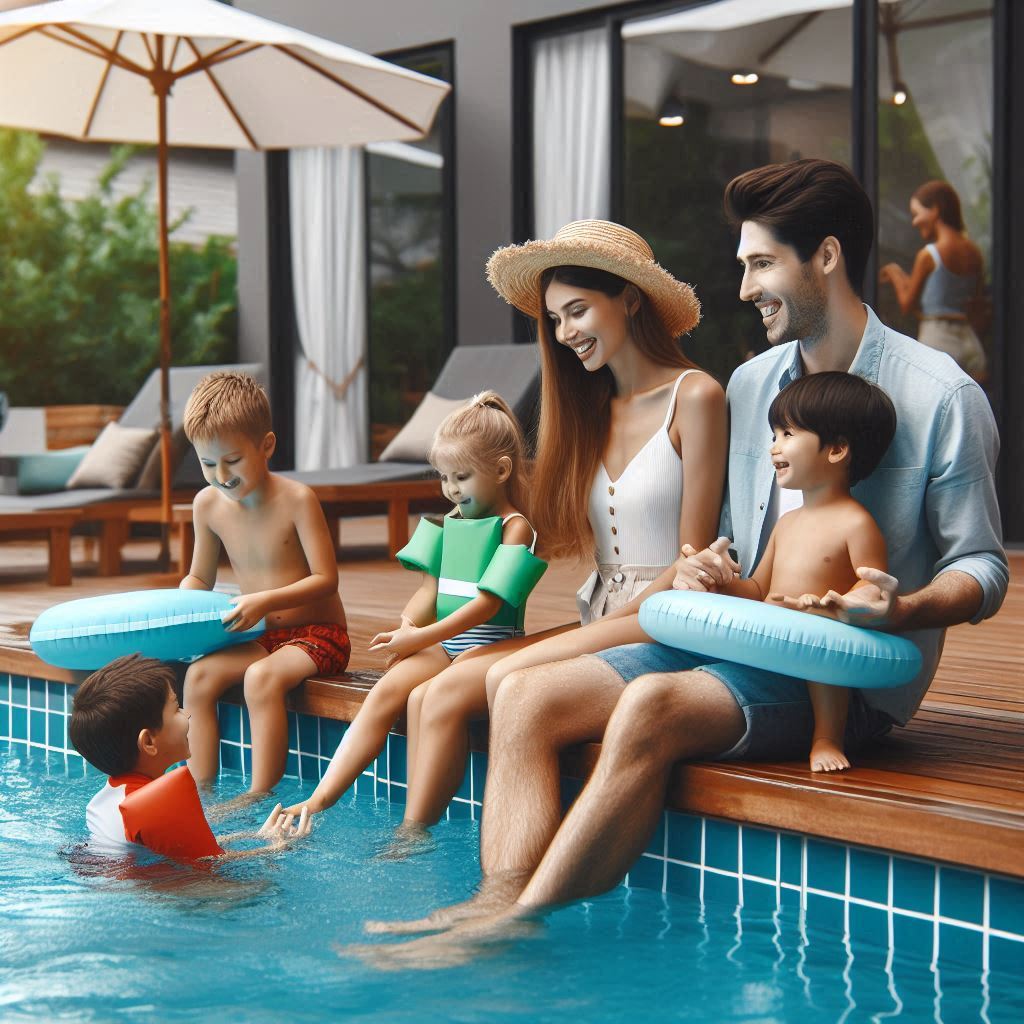Pool safety requirements are essential for all families who have children in their household. A pool area that is properly safeguarded offers both reassurance and enables safe swimming activities for all users. This guide provides vital pool safety advice and practical solutions which pool owners must adopt.
1. Install a Pool Barrier
The installation of physical barriers around pools constitutes one of the most reliable methods to stop accidents. This can include:
Fencing: A 4-foot high fence should be installed with gates that close automatically and latch by themselves. The fence must prevent children from accessing climbing points that could help them reach the top.
Pool Covers should have enough weight capacity for children and pets to prevent unintentional pool entry.
2. Teach Children Water Safety
Teaching children about water safety remains essential to avoid accidents:
Children should receive swimming lessons during their early years of development. The acquisition of basic swimming techniques by children dramatically decreases their chances of drowning.
The pool area requires children to follow specific rules which include remaining still while approaching the water and refraining from diving into shallow depths and swimming in pairs.
Supervision: Children need constant supervision by poolside whether they can swim or not. Assign a grown-up to watch children throughout pool hours.
3. Use Life-Saving Equipment
The availability of life-saving equipment during emergencies leads to better outcomes in rescue situations.
The pool should have a lifebuoy together with rescue hooks or poles that allow easy retrieval.
First Aid Kit: A first aid kit should be placed within easy reach near the pool area to treat any injuries that occur.
CPR Training: Take a CPR and first aid training course as a preparedness measure for potential emergencies.
4. Maintain proper standards for pool water quality.
The health and safety of pool users depends heavily on correct water maintenance practices.
Regular Testing: Regular water testing should be conducted to check sanitizer levels and pH balance while maintaining proper clarity. The maintenance quality of pool water acts as a protective barrier against waterborne diseases.
The pool area should be cleaned frequently to eliminate leaves and debris that cause slipping hazards.
5. Be Aware of Environmental Hazards
The safety of your pool area can be impacted by environmental elements. Consider the following:
Weather Conditions: Weather monitoring should be performed while the pool remains closed during storms together with severe weather conditions. Swimming during lightning poses a critical threat to people in the water.
Sun protection measures such as sunscreen and hats and protective clothing should be used by children when they stay outside for long periods to avoid sun damage and heat-related illnesses.
6. Create a Pool Emergency Plan
An emergency plan helps everyone understand their actions in case an accident happens.
Emergency Numbers: The pool area should display emergency contact information that includes local emergency services and poison control.
Family members should receive designated responsibilities for emergency situations including the task of contacting help and caring for others until professional assistance arrives.
Conclusion
Pool safety remains vital for families who want to have enjoyable swimming sessions without anxiety. Establishing safety protocols combined with child education and proper pool sanitation procedures will establish a protective environment for all pool users. Check our website or reach out to our friendly support team for guidance on getting any mentioned items or chemicals from the pool cleaners blog. Safety demands continuous attention and monitoring because it remains an ongoing responsibility.
Some products you might be interested in:
[products_pinterest_style products=”4″ cat=”WellRecommended” columns=”4″]
